Compiled by Doug Pfeiffer, Department of Entomology, Virginia Tech, Blacksburg VA 24061
Spotted lanternfly is a new invasive pest so far restricted to the mid-Atlantic states. As it expands its range, it has entered the northern part (Virginia) of our Southeastern region. It is likely to expand considerably. While grape is the commercial crop at greatest risk, blueberries and caneberries will likely be impacted as well. The following is a summary of the pest’s biology, with an update of recent developments.
The insect: The spotted lanternfly (SLF), Lycorma delicatula (White), originated in China where its presence has been documented in detail dating as far back as the 12th century. In modern times, it was first recorded from a sample collected in Nankin, China. SLF is native to China, India, Japan, Korea, and Vietnam. There is one generation per year. The eggs overwinter, with nymphs appearing in late April or early May (May 9 in 2018, April 27 in 2019). The first three nymphal instars are black with white spots.The fourth and final instar becomes bright red, with white and black markings.
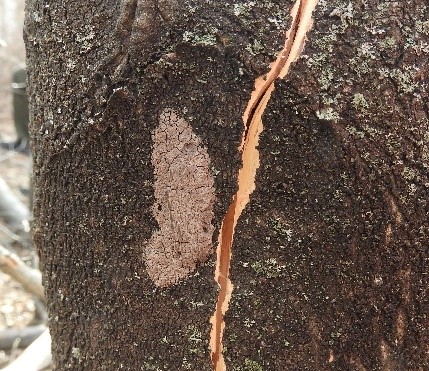
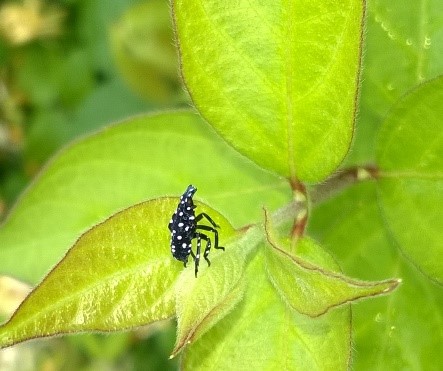
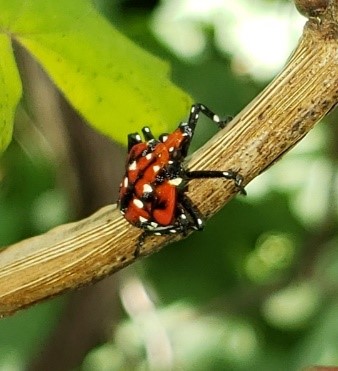
Adults appear in mid-July. These adults have grey front wings with black spots, with an area containing small black rectangles near the wing tip. Bright red markings on the hind wings are exposed during flight. Nymphs and adults form feeding aggregations, feeding on phloem sap, and excreting large amounts of honeydew, which coats plants and other surfaces, supporting the growth of black sooty mold. The nymphal host range is extensive, with more than 70 plant species, in multiple families. In the fall, adults return to tree of heaven, where they sequester indole alkaloids that confer protection against predators. In 2018, courtship behavior was seen on Sep 12, with first eggs detected on Sep 17. In 2019, first eggs in Virginia were seen on Sep 12.
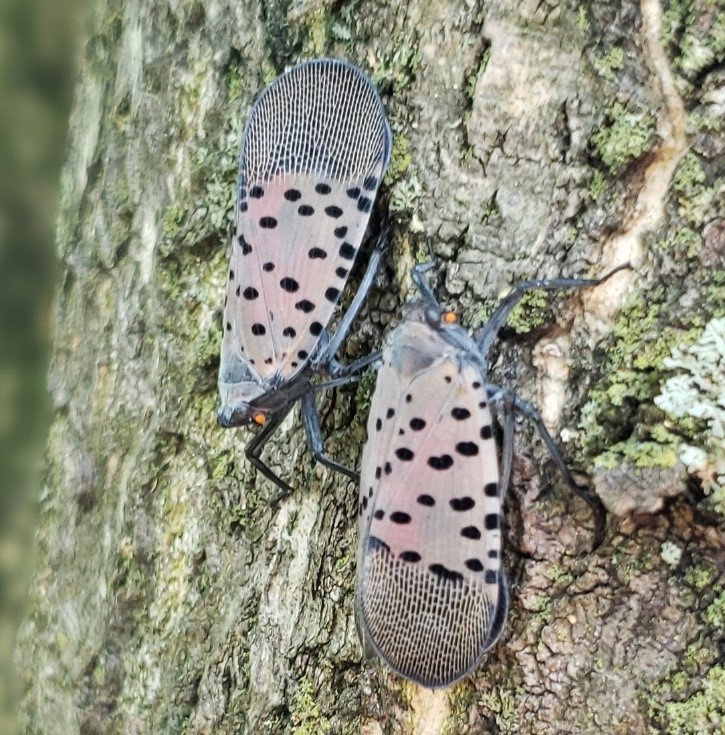
Spread to US and Virginia: In September 2014, the first detection of SLF in the US was confirmed in eastern Pennsylvania. In 2017, the range expanded to 13 Pennsylvania counties and in 2019, the Pennsylvania range expanded to include 22 counties. SLF is now established in 13 counties of New Jersey. Egg masses and dead adults were found in Winchester in January 2018, reflecting population development in 2017. During the 2018 season, the infestation zone in Virginia expanded from approximately 1 square mile block in Winchester, Frederick County, to about 18 square miles, and 40 square miles in fall of 2019. Here is a map of the current SLF distribution. Blue counties are shown in blue; counties marked with a red point have had a single find, with no evidence of reproduction.
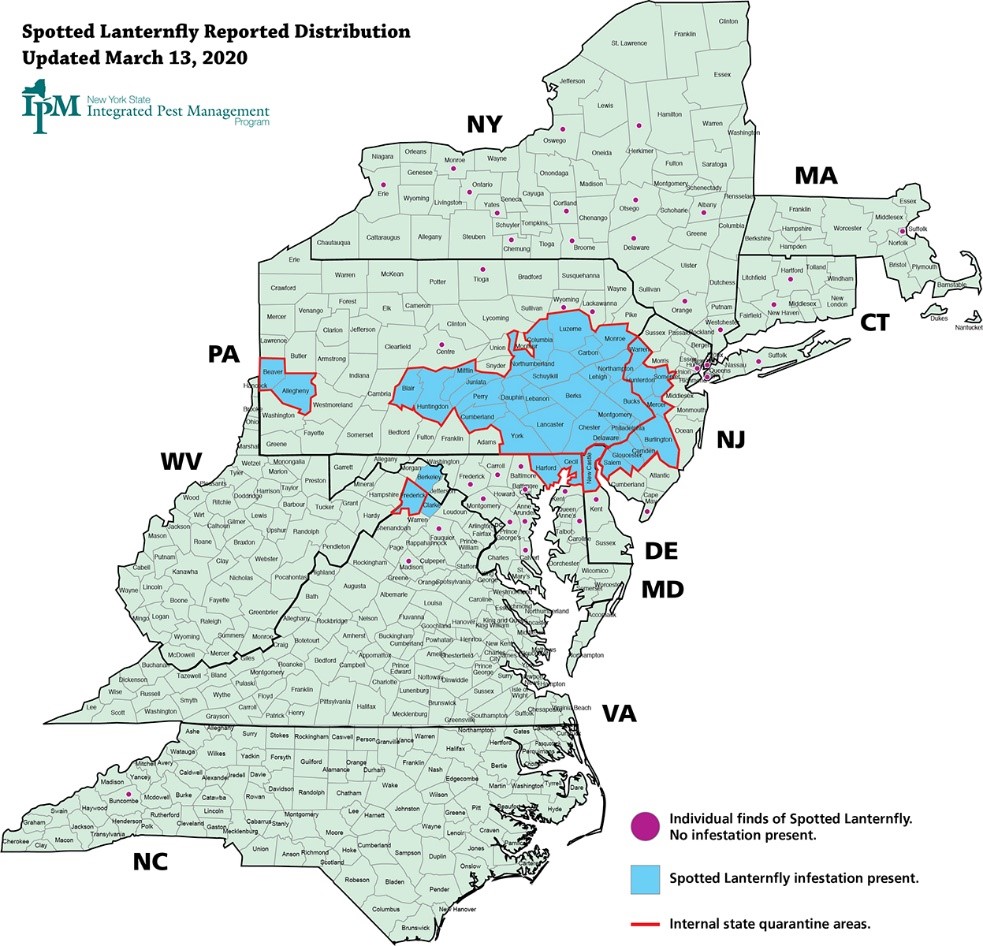
An eradication effort is underway in states where SLF is established. It is highly invasive and can spread rapidly when introduced to new areas. This is attributed to its wide host range (more than 70 host plant species), a lack of natural native enemies, and its ability to hitchhike in human conveyances.
Pest status: This insect poses a threat to commercial vineyards, small fruit plantings, orchards, and even forest systems. Grape is the most vulnerable commercial crop. Extensive vine death has occurred in Pennsylvania vineyards resulting from attack by SLF. Because of huge populations that can develop, and its habit of producing large amounts of honeydew and resulting sooty mold growth, it becomes a severe nuisance pest in residential areas.
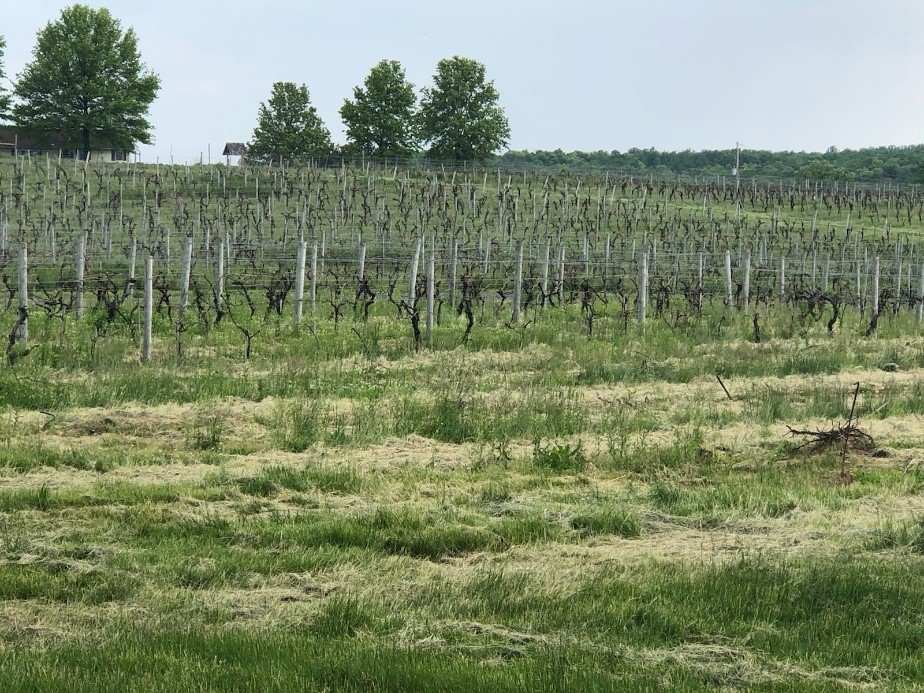
Quarantine established for Virginia: States often enact quarantine measures on portions of the state with established SLF populations. On May 28, 2019, the Virginia Department of Agriculture and Consumer Services (VDACS) announced the establishment of a quarantine to limit the spread of SLF. Some of the key provision of the quarantine are:
1) The regulated area includes the city of Winchester and Frederick County.
2) The list of regulated articles is long – basically any materials left outside! Examples include plants, outdoor industrial materials, shipping containers, outdoor household articles, conveyances and others
3) Regulated articles may be moved from the quarantine area if they have been inspected, and are accompanied by a permit;
4) Regulated articles may be moved within the quarantine area following an inspection; a certificate is not required.
5) From April 1-Dec 31, regulated articles may be moved through the regulated are without stopping, or stopping only for fuel or traffic conditions.
6) To obtain a permit to move regulated articles, a person doing business must complete a VDACS-approved training (see below) and agree to train employees on identification of SLF.
Are control actions needed? There is currently an eradication (or at least slow the spread) program underway in the infestation zone. This consists of destruction of egg masses where possible, removal of tree of heaven by cutting combined with herbicide treatment (cutting alone will result in proliferation of tree since they will sprout from roots), and treatment of remaining larger trees with dinotefuran. Pesticide application for SLF on individual farms in Virginia are not recommended at this time, because of the limited spread. This will change as the insect spreads. Integrated Pest Management calls for the use of multiple control tactics to suppress a pest. Unfortunately, with this new invasive pest, much work needs to be done on control measures.
If spotted lanternfly is found: Suspected finds in your state should be reported immediately to your state Department of Agriculture, or land-grant university Department of Entomology. The specimens should be photographed and killed, if alive.
Resources:
Day, E., D. Pfeiffer, T. Dellinger and C. Bergh. 2018. Pest Alert: Spotted lanternfly Lycorma delicatula. Va. Coop. Ext. Fact Sheet. Publ. ENTO-265NP. 2pp. (https://pubs.ext.vt.edu/ENTO/ENTO-265/ENTO-265.html)
Dechaine, A., E. Day, D. Pfeiffer and M. Sutphin. 2019. Residential control for spotted lanternfly (SLF) in Virginia. Va. Coop. Ext. Publ. ENTO-322NP. 2 p. (https://www.pubs.ext.vt.edu/ENTO/ENTO-322/ENTO-322.html)
Pfeiffer, D. G., E. R. Day and T. A. Dellinger. 2018. Spotted lanternfly, Lycorma delicatula (White) (Hemiptera: Fulgoridae). Va. Coop. Ext. Fact Sheet. Publ. ENTO-180NP. 2 pp. (https://pubs.ext.vt.edu/ENTO/ENTO-180/ENTO-180.html)
Pfeiffer, D. G., E. R. Day, T. Dellinger, A. Dechaine and M. Sutphin. 2019. Spotted lanternfly in Virginia vineyards: Lycorma delicatula (White) (Hemiptera: Fulgoridae). Va. Coop. Ext. Publ. ENTO-323NP. 2 p. (https://www.pubs.ext.vt.edu/ENTO/ENTO-323/ENTO-323.html)
Pfeiffer, D. G., E. R. Day, T. Dellinger, A. Dechaine, M. Sutphin and B. Sastre. 2019. Mosca linterna con manchas (Spotted Lanternfly) en viñedos de Virginia: Lycorma delicatula (White) (Hemiptera: Fulgoridae). Va. Coop. Ext. Pub. ENTO-323S. 2 p. (https://www.pubs.ext.vt.edu/ENTO/ENTO-323S/ENTO-323S.html)